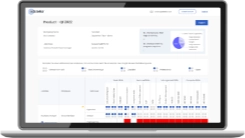
Have you ever noticed that some colleagues naturally earn respect and recognition, regardless of their role or tenure? It’s rarely just about their technical skills it’s how they carry themselves, engage with others, and navigate workplace dynamics with professionalism and confidence.
Now flip that: what happens when those behaviors are missing? You get tone-deaf emails, eye-rolls in meetings, skipped greetings, and awkward interactions that quietly chip away at your company culture. And let’s face it HR is the one left cleaning up the mess.
If it feels like professional behavior is becoming optional or worse, forgotten you’re not alone. Resume Builder reports that 45% of companies have already launched workplace etiquette training, and another 18% joined them by 2024. Why? Because the basics respect, punctuality, clear communication aren’t being practiced consistently.
As Elaine Swann, Corporate Etiquette Trainer, perfectly puts it:
In this blog, we unpack the workplace etiquette gaps that silently chip away at culture, collaboration, and career growth. But before we dive into the specifics, let’s get clear on what workplace etiquette actually means and why it’s more critical than ever in today’s evolving work environment.
What is Workplace Etiquette
Workplace etiquette is all about the unwritten rules that shape how professionals interact and behave within an organization. It sets the tone for how employees communicate, collaborate, and carry themselves with professionalism, courtesy, and respect whether they’re dealing with peers, managers, or clients.
Etiquette directly influences how an employee is perceived. Each person represents a personal brand, and how they behave especially in communication and day-to-day interactions can make a lasting impression on others and shape their professional reputation.
However, as hybrid work models and fast-paced communication become the norm, many organizations are noticing a decline in day-to-day behavioral standards particularly among newer employees entering the workforce with limited exposure to professional norms. What used to be picked up through observation and experience now needs to be intentionally taught, modeled, and reinforced.
Workplace Etiquette: Dos and Don’ts Every Employee Should Know
Workplace culture thrives on more than just technical skills it’s shaped by the way employees communicate, collaborate, and carry themselves every day. While each company may have its own culture, some etiquette practices are universally respected.
That’s why we’ve outlined 10 essential workplace etiquette dos and don’ts practical, real-world behaviors that help employees build stronger relationships and elevate the overall work environment.

Let’s get into it.
1. Acknowledge Everyone
Respect in the workplace begins with recognition and something as simple as a greeting can go a long way. Studies show that emotions are powerful communicators in professional settings, and individuals who acknowledge others' presence and emotions are perceived as more trustworthy. Whether it's a nod, a "good morning," or a friendly smile, these gestures help build a more cohesive and supportive work environment.
2. Punctuality Matters
Time is a shared resource and how your employees manage it sends a clear message about their professionalism. Being punctual isn’t just a nice-to-have trait; it’s a core part of work etiquette. It demonstrates respect for others’ schedules and keeps workflows running smoothly.
According to studies, 65% of late employees stay beyond working hours to make up for it, but that doesn’t undo the disruption. Even more telling 4 in 10 employers have fired someone due to repeated lateness.
Whether junior or senior, how employees show up (and when) impacts team dynamics and productivity. Punctuality reflects ownership, discipline, and a commitment to excellence.
3. Use Polite Expressions
In busy work environments especially where communication is fast and frequent common courtesies often get overlooked. With quick chats, rapid emails, and virtual meetings becoming the norm, simple gestures like saying "please" and "thank you" can easily get lost in the rush. This subtle decline in everyday manners can unintentionally create friction or leave colleagues feeling undervalued.
This is why 78% of companies offering etiquette training focus on "making polite conversation," followed by 69% on "writing professional emails." These aren’t just soft skills they’re core components of office etiquette, essential for building mutual respect and maintaining a positive workplace tone.
4. Be Respectful in Meetings
Meetings whether in-person or virtual are essential for collaboration, and meeting etiquette plays a crucial role in making them effective. In remote or hybrid settings, virtual workplace etiquette becomes especially important to ensure professionalism and focus. Employees should maintain proper conduct in both conference rooms and virtual environments by being fully present, listening actively, and contributing meaningfully to discussions.
5. Demonstrate Courtesy
Courtesy in the workplace reflects more than just good manners it signals emotional intelligence and sets the tone for mutual respect. While 65% of managers and 46% of employees believe courtesy supports career advancement, there’s a notable disconnect: 61% of leaders say it improves with seniority, while nearly half of employees feel it declines. That’s why it’s crucial to model respectful behavior at all levels.
Harvard Business Review also highlights that expressing appreciation and positive reinforcement not only uplifts morale but helps reduce stress and builds a stronger sense of value within teams.
6. Maintain Consideration for Common Areas
Common complaints from hybrid and in-office employees included loud talking, office gossip and not being prepared for meetings
Shared spaces in the workplace reflect the collective culture of an organization. When employees treat areas like open workstations, cafeterias, and meeting rooms with respect, it promotes a cleaner, quieter, and more professional environment for everyone. It's not just about cleanliness it's about showing consideration for your colleagues' space and focus.
7. Dress Appropriately
In a survey, 75% of respondents said ‘dressing professionally’ is a key focus in workplace etiquette classes.
What employees wear and how they present themselves speaks volumes before they even say a word. Grooming and etiquette go hand in hand when it comes to workplace presentation. A well-groomed, professional appearance signals attention to detail, confidence, and respect for both the workplace and those around them. This becomes even more critical during client interactions, where first impressions carry lasting weight.
8. Observe Proper Table Manners
Dining etiquette is an important part of business etiquette especially when meals involve colleagues, clients, or senior leadership. How employees conduct themselves at the table often reflects their overall professionalism and social awareness.
Practicing proper dining etiquette helps employees create a positive impression and reinforces professional conduct in formal settings.
9. Stay Open-Minded in Discussions
Clear and respectful business communication is essential for upholding professionalism in any workplace. According to a study published in Oklahoma State Medical Proceedings, organizations that train employees in handling crucial conversations see significant improvements in teamwork, stress management, and overall workplace dynamics. In fact, Forbes reports that effective communication can increase productivity by up to 25% especially when team members feel connected and aligned.
Fostering open-mindedness during discussions helps build trust, collaboration, and psychological safety, which are vital for inclusive and high-performing work cultures.
10. Encourage a Positive Work Culture
Creating a healthy workplace culture starts with how employees treat one another. Small behaviors both positive and negative can ripple across teams. When kindness, empathy, and emotional intelligence are practiced consistently, they foster stronger collaboration and a more resilient workforce.
Encouraging respectful interactions and discouraging toxic habits like gossip is essential to building trust and maintaining morale.
60% of companies offering etiquette classes say they are mandatory for all employees, while 21% make them optional, and 19% require them for certain roles.
Case Study: How a Global Automotive Company Strengthened Workplace Etiquette
A leading global automotive manufacturer partnered with Momentum Training Solutions to enhance workplace and business etiquette among its middle and senior-level managers. With over 160 participants from India, Germany, Turkey, Japan, and the U.S., the program aimed to improve professional conduct across diverse teams and geographies.
The company recognized the importance of polished behavior especially when dealing with global stakeholders. Their goals were to:
- Develop strong interpersonal skills for effective cross-cultural communication
- Minimize unintentional etiquette missteps
- Promote behaviors that align with their brand image
The training was delivered through ten interactive batches, each lasting six hours. The first segment focused on global etiquette, covering appearance, email and communication norms, and professional conduct. The second half included hands-on modules on dining etiquette, social behavior, and rapport-building featuring live dining simulations conducted in partnership with hotel staff.
To keep the training engaging and practical, the sessions included:
- Role-playing based on real workplace situations
- Group discussions on cultural sensitivity
- Peer presentations on topics like posture, tone, and dress code
- Instructor-led deep dives into international etiquette norms
Before rolling it out organization-wide, the company piloted the session with a small team, including L&D leaders. This allowed them to fine-tune the content and delivery approach for maximum relevance and impact.
The outcome? A more etiquette-aware leadership team that’s better equipped to represent the company in global and client-facing contexts, while also setting a behavioral benchmark internally.
This case highlights the growing value companies place on structured workplace etiquette training not just for soft skills, but as a core part of their professional brand and organizational culture.
Frequently Asked Questions
Conclusion
How professionals interact, collaborate, and present themselves plays a critical role in shaping both individual success and workplace culture. That’s where workplace etiquette becomes a true differentiator it fosters respect, trust, and stronger relationships in any professional setting.
As organizations place increasing value on behavioral excellence, the demand for structured workplace etiquette training is on the rise. To truly make an impact, it’s essential to choose a training partner that understands both skill development and people dynamics.
Edstellar stands out with its tailored corporate training programs and the Skill Matrix a powerful tool that helps businesses map, assess, and upskill employees not just technically, but also in terms of workplace behavior and professional conduct.
Mastering etiquette doesn’t just make you a better professional it helps you become the kind of leader others respect and trust.
Explore High-impact instructor-led training for your teams.
#On-site #Virtual #GroupTraining #Customized
Edstellar Training Catalog
Explore 2000+ industry ready instructor-led training programs.

Coaching that Unlocks Potential
Create dynamic leaders and cohesive teams. Learn more now!


Want to evaluate your team’s skill gaps?
Do a quick Skill gap analysis with Edstellar’s Free Skill Matrix tool

Stay informed on L&D best practices
Get periodic updates on learning and development industry trends, expert insights, success stories and innovative training practices from Edstellar.
.svg)
Featured Post
.webp)
Contact Us
Submit your Training Requirements below and We'll get in touch with you shortly.
.svg)



.svg)



.svg)

.svg)
.svg)
.svg)

